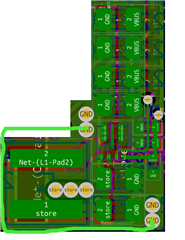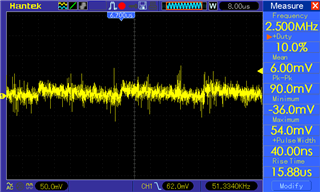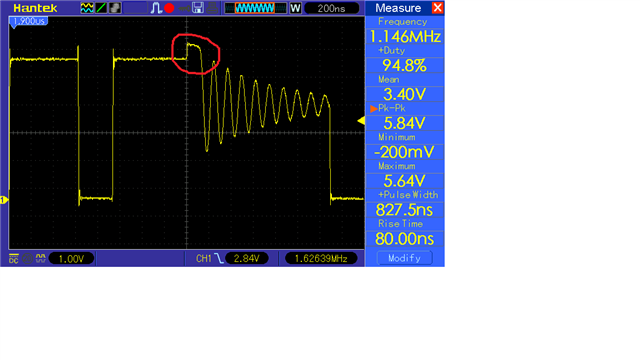Other Parts Discussed in Thread: TPS61022
Hi,
I have a TPS60122 boosting super-cap voltages up to 5v and anywhere from 0-3A. It's not using the reference design but follows the same principles.
Spec:
Output: 4x 22uf/0805/X5R/10V
Input: 8x 22uF/0805/X5R/10V (2 very close, 2 close to the left of the inductor, 4 on the rear.
Divider: 732k/100k
I've had this circuit running before without any loop instability but the inductor was on the reverse, less than ideal and so it was moved. There is another shielded inductor from a 100KHz buck circuit on the rear of the board but there's two inner layers which are GND so (I think) this won't impact it.
What I've found is with a slight draw of about 5mA from the output the voltage ramps from 5v to ~5.5v with huge noise, AC measured as ~100-400mV.
This is with the input voltage from 2.5v to 4v. I didn't test other values but I need to support 0.5-5V input, whence the decision not to use a feed forward capacitor.
I've tried adjusting input & output capacitance up but to no avail. I then added a 330pF feed forward capacitor and the situation has fully resolved.
The question is whether this is going to limit the input voltage / output current that I can utilise, and the second question is whether using smaller feedback resistors (i.e 73.2k & 10k) will increase stability at the expense of a little extra draw, rather than use the feed forward capacitor which (I think) targets a particular voltage/current combo.
Regards,
Andrew










